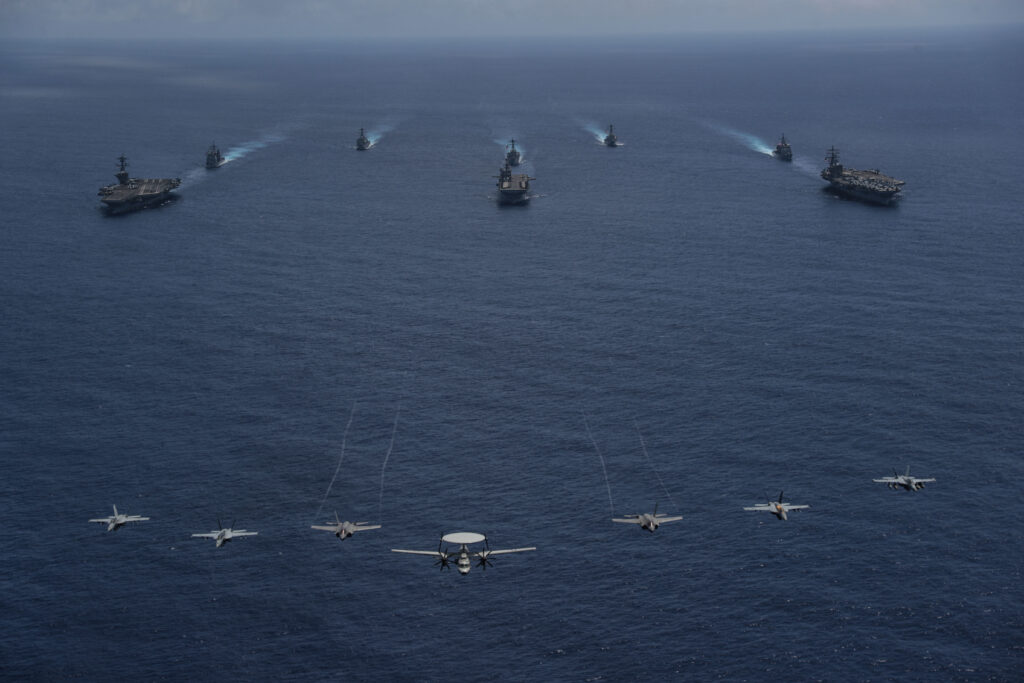Lockheed Martin Partners with U.S. Indo-Pacific Command in Successful Multi-Domain Experiments

BETHESDA, Md. — Lockheed Martin paired its DIAMONDShield battle management system with four Virtualized Aegis Weapon System nodes deployed across hundreds of miles to successfully demonstrate multi-domain operations during a recent U.S. military exercise, the company said June 21.
The exercise, Valiant Shield 2022, is a biennial training activity involving thousands of U.S. military personnel and more than 200 ships, aircraft and ground vehicles with a focus on integrating forces in multiple domains, and is a cornerstone of the U.S. Indo-Pacific Command’s integrated deterrence strategy to prevent conflict in the region.
During the 12-day event in Guam and other locations in the Pacific, Lockheed Martin partnered with the U.S. Indo-Pacific Command to experiment with using artificial intelligence to enable rapid decision-making — in seconds or minutes compared to hours — at strategic, operational and tactical levels of missions across air, land, sea and space.
“We recognize our customers’ need to rapidly integrate emerging technologies into mission-focused solutions,” said Joe Ferrara, Lockheed Martin’s advanced concepts director supporting the exercise. “Through experiments like Valiant Shield, we are learning collaboratively with our customers to advance Joint All Domain Operations, with the intent of delivering capability faster to the warfighter.”
With 14 Lockheed Martin engineers in the field, the company introduced DIAMONDShield and VAWS into a series of offensive and defensive scenarios involving Lockheed Martin’s High Mobility Artillery Rocket System and PAC-3 Missile Segment Enhancement. DIAMONDShield’s artificial intelligence technology analyzed operational command and control data in real-time during dynamic fires, and provided commanders with decision aids to recommend assets to respond to incoming threats.
After commanders decided how to engage, the VAWS next-generation combat system routed precision targeting data and detailed orders to front-line assets like the PAC-3 MSE and HIMARS. Using machine-to-machine interfaces, VAWS transmitted the information digitally across existing military service data stovepipes, a concept known as coordinating “digital force orders.” In this case, the Marine end user was able to execute a commander’s intent without having to manually translate the order into Marine doctrine, regardless of whether the order came from an Air Force, Army, or Navy commander. This also saved users time because they no longer had to read coordinates over a radio, and it reduced room for error by eliminating the risk of misinterpreting spoken instructions.
The team will use the experience and feedback to optimize training and improve the systems for the next exercise.
This is the fifth military exercise in which the company has partnered with the U.S. Indo-Pacific Command. Beginning in 2019 with Talisman Sabre and as part of the command’s Pacific Deterrence Initiative, Lockheed Martin has participated in a series of exercises that have each demonstrated progressively expanded capabilities: Talisman Sabre 2021 and 2019, Northern Edge 2021 and Valiant Shield 2020.